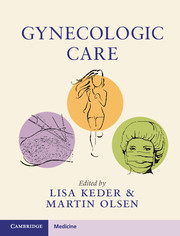Book contents
12 - Laparoscopic Hysterectomy
from Section 2 - Gynecologic Surgery
Published online by Cambridge University Press: 01 February 2018
Summary
Introduction
Laparoscopic hysterectomy (LH) encompasses a range of laparovaginal procedures for the removal of the uterus and its adnexa. It is a powerful and broadly applicable surgical technique. It provides a minimally invasive alternative to total abdominal hysterectomy (TAH) while allowing full visualization of the pelvis impossible with vaginal hysterectomy (VH). In this chapter, the various forms of LH, indications, technique, and complications are described.
Scope of the Problem
Hysterectomy is one of the most common surgical procedures in the United States. The majority of hysterectomies continue to be performed abdominally, despite recommendations for a vaginal approach, where feasible. Laparoscopic hysterectomy is a minimally invasive procedure which can effectively replace a substantial number of abdominal hysterectomies, as detailed in the sections that follow. Like all surgeries, technical considerations substantially improve outcomes and broaden the settings within which a minimally invasive approach can be used.
History
The first literature description of LH was by Dr. Harry Reich in 1989 [1]. Ten years later, Reich and colleagues classified laparovaginal hysterectomy based on the level of dissection required (see Table 12.1 and Figure 12.1) [2]. The essential difference between LH and laparoscopically assisted vaginal hysterectomy (LAVH) is that the uterine vessels are dissected and divided laparoscopically in LH. Further extent of dissection below the uterine vessels is a matter of surgeon choice rather than of procedure conception.
As early as 1996, total laparoscopic hysterectomy (TLH) was sufficiently well developed to generate literature describing its utility [3]. For this procedure the essential difference is the vaginal cuff is dissected laparoscopically, with the specimen typically removed vaginally. Cuff closure is then accomplished either laparoscopically or vaginally.
Indications and Choice of Procedure
The American College of Obstetricians and Gynecologists has addressed the issue of procedure choice [4]. Vaginal hysterectomy is preferred when feasible. Laparoscopic hysterectomy of any type is preferred when pure vaginal surgery is not reasonable. Open abdominal hysterectomy is reserved for pathology or patient conditions that make laparoscopic procedures impossible or inadvisable. The technical skill and experience of the operator will also influence the choice of procedure.
- Type
- Chapter
- Information
- Gynecologic Care , pp. 101 - 112Publisher: Cambridge University PressPrint publication year: 2018

